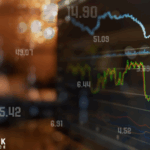Navigating the turbulent waters of consumer economics, global brands face mounting challenges arising from U.S. tariff policies. These levies are putting intense pressure on companies to adjust their pricing strategies carefully. Consumers feel the strain with higher prices, forcing brands to juggle between absorbing costs and passing them on. This situation calls for brands to craft strategies that sensibly target their diverse customer bases while retaining their market share.
Among the 300 companies tracked by Reuters’ tariff tracker, differing responses depict a notable divide. For context, at least 92 have implemented price increases, highlighting the complexities companies face. Not all brands respond uniformly; some luxury brands such as Hermes have opted for more aggressive pricing hikes, assuming loyal customers will absorb these increases. Meanwhile, Reuters had previously reported that certain companies refrained from passing tariffs onto consumers, a position that appears to be shifting distinctly now.
How Are Consumer Companies Managing Tariff Challenges?
Consumer companies are divided on their approach. Some companies have decided to pass on the higher costs directly to consumers, whereas others are weighing the impact of these actions on their sales volume. Morgan Stanley noted that the tariffs act as a “regressive tax” impacting lower and middle-income households more heavily. The decisions brands make involve precisely understanding their consumer demographics and targeting strategies accordingly.
Who Can Best Weather the Tariff-Driven Pricing Challenges?
Luxury brands, like Hermes, can endure these pricing challenges better. With the fiscal freedom to increase costs by up to 7% globally and even more in the United States, their reliance on loyal high-income customers makes them less sensitive to price elasticity. Porsche and Aston Martin have also upped prices slightly, despite issuing profit warnings, indicating a cautious approach under prevailing market conditions.
As consumer behavior remains unpredictable amid economic pressures, the tariff fallout is visible in supply chain disruptions leading to stockouts, primarily in essential goods. Approximately half of American consumers have struggled to find necessities due to these dynamics combined with persistent global instabilities.
The PYMNTS Intelligence report adds weight to the argument, with nearly half of consumers unable to purchase essential items, such as groceries and apparel. Such shortages stem from enduring global disruptions, expedited by tariff-driven price increases disproportionately affecting financially vulnerable groups. Shoppers seeking affordable imported goods are the most affected.
Assessing recent developments, companies appear caught between maintaining profit margins and retaining customer trust. The disparity between brand segments shows a complex market attempting to accommodate varying customer demands while staying competitive. As tariffs pose long-term implications, brands are now identifying more resilient strategies that align with shifting consumer expectations.










